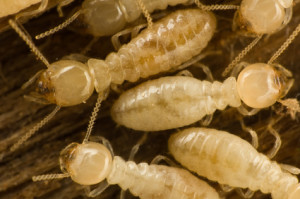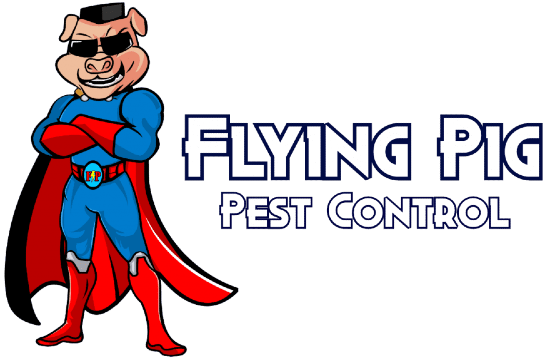The type of termite found in the Midwest is the eastern subterranean termite. Other termites, such as Formosan and drywood termites, are not currently present in the Midwest.
With their remarkable resilience, subterranean termites live in colonies below ground, somewhere above the water table. Therefore, termites enter your house from the ground up, reminding us of the importance of proactive measures.
Location of the Termite Colony
The termite colony is not always situated near the home. These insects can journey up to a hundred feet from their colony in search of food. As a result, the colony may be located a short distance from a structure or considerably farther away. Additionally, there may be multiple colonies in the area. Some entomologists suggest that there could be up to 25 colonies per acre.
Hence, the potential for damage to homes from subterranean termites is significant. Many termite control professionals often categorize homes into two groups concerning termites: those that already have termites and those that will encounter them eventually.
Subterranean termites are highly social and extremely organized insects dwelling in underground colonies, featuring distinct castes specialized for various colony duties. The colony is highly complex, as the caste members work together to survive and expand by creating new colonies.
Caste of Characters: Members of the Subterranean Termite Colony
Three main castes exist within these colonies: workers, soldiers, and reproductives. Reproductives comprise the king, queen, and secondary reproductive members.
Worker Termites: the Producers of the Subterranean Termite Colony

Workers, creamy-white in color, resembling a small, white ant, are rarely sighted unless disturbed, as they primarily consume wood and other cellulose material, inducing significant damage to homes. They create shelter tubes, or “mud tubes,” that they construct to safely travel without being exposed to the elements. Homeowners may encounter these shelter tubes in floor joists in basements, the garage, and other places. Additionally, homeowners may discover damage to wood in their homes. Each worker may live for up to five years, underlining the urgency of termite control.
The worker termite is the caste member that causes damage. The other caste members serve different purposes in the colony, helping to ensure its survival and for the production of new termite colonies.
Worker termites search for food by foraging. A mature colony may contain a million termites, most of which are worker termites, usually more than 90 percent. Termites are drawn to and consume cellulose, breaking it down through digestion. They are particularly drawn to wood that is undergoing decay, often due to the presence of wood-decaying fungi within rotting wood. When the worker termites find a food source, they mark the trail with a pheromone, which alerts the other termites to the food source. The workers travel to and from the food source, consuming the wood and bringing it back to the colony.
Soldier Termites: the Producers of the Termite Colony
Soldiers, characterized by elongated yellowish heads and prominent jaws, closely resemble adult workers in size, measuring about a quarter-inch. When threatened, soldiers fiercely defend the colony by employing their jaws.
Secondary Reproductive Termites: Helping the Subterranean Termite Colony to Expand
Secondary reproductive termites bear a resemblance to workers and contribute to the growth of the colony. They typically feature elongated abdomens and wing pads. They constitute less than 1% of a colony but certainly contribute to colony growth through supplementary egg production.
The queen, soldier, and secondary reproductive termites rely on gut protozoa to assist digestion. Mature workers transfer these beneficial gut symbionts to others through a process called trophallaxis, passing them mouth-to-mouth or anus-to-mouth while sharing food.
Consequently, the colony’s survival relies heavily on its workers, prompting it to generate a large population of this essential caste.
Termite Alates, or “Swarmers”: Introducing the King and Queen of the Termite Colony
Termite alates, or “swarmers,” emerge once per year, usually between February and June in the midwest. These winged termites are reproductives. If a mating pair survives, the female becomes the queen of a new colony.
These reproductive termites emerge in established colonies under favorable conditions. Kings and queens, dark brown to black in color and ranging from 3/8 to 1/2 inch in length, possess two pairs of translucent wings of equal size, which they shed shortly after swarming. Often, these discarded wings serve as the sole indicator of termite presence within a structure. In the Midwest, winged termite swarms typically occur between February and June.
The swarmers usually swarm by the hundreds or thousands, causing stress for the homeowner. They emerge, shed their wings, and mate quickly – usually a day or two – but could be longer. While termite swarmers do not cause damage, they serve the purpose of alerting the homeowner of the presence of worker termites. Termite control professionals are quite busy during swarm season since this is when most people discover the termites.
The Termite Queen
The king, slightly larger than the workers within the colony, exhibits a white hue. Similarly, the queen is white and has a greatly distended abdomen, accommodating egg-laying. Due to her swollen body, she lacks mobility and relies on the workers to provide sustenance. Her sole purpose is to reproduce, and she may lay more than 1,000 eggs per day.
There you have it – the components of a highly social and industrious termite colony. Understanding how these colonies operate sheds light on their potential threat to your home. However, it is essential to recognize that termites typically require considerable time to cause structural damage.
Controlling the Termite Colony
Two primary termite control methods warrant consideration: a conventional liquid termite treatment and a termite baiting system. Homeowners should thoroughly consult professionals and conduct research before deciding which treatment option suits their needs best.
Conventional Termite Treatment
A chemical treatment approach establishes a continuous barrier around the home’s foundation. Typically, a non-repellent barrier is employed, allowing termites to pass through it unknowingly, becoming infected by the termiticide. This method involves creating a small trench around the foundation, into which the termiticide is injected, followed by covering the trench. Additionally, holes are drilled approximately 12 to 18 inches apart where slabs contact the foundation, through which termiticide is injected into the soil before patching the holes.
Related: How Are Termites Treated?
Termite Baiting Method
Alternatively, a baiting system can be deployed, where bait stations are strategically positioned around the foundation. Foraging worker termites discover the bait, consume it, and then return to the colony, distributing the termiticide to other caste members.
Other termite control strategies include pre-treatment measures and treating wood with borates to prevent termite damage to the structure.
Termites in Your House? What to do Next. . .
Many people also discover termites during a real estate inspection, meriting the need to have treatment rendered as soon as possible. Others discover termites by finding damage or experiencing a termite swarm.
If you discover termites on your property, you should seek advice from a qualified professional and a thorough inspection and recommendations. Take the time to educate yourself before committing to a termite control contract. While addressing a termite infestation is crucial, it’s rarely an emergency that requires hasty action.
